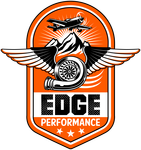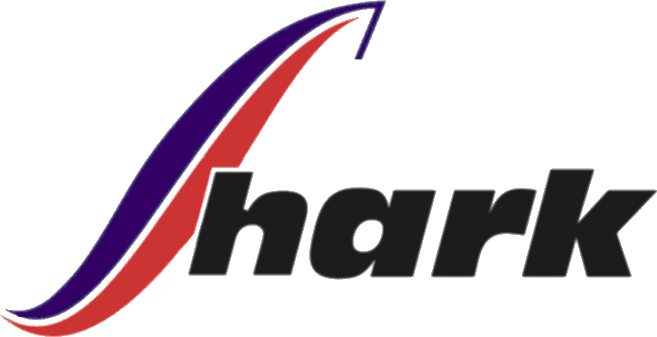Trig’s TX56 and TX57 Nav/Com units provide the ideal platform to update legacy avionics or equip your new aircraft. Slimline and highly efficient both Nav/Com models are housed within a superbly engineered case. At only 33mm high each unit saves valuable space yet contains an impressive selection of practical features for any pilot.
You might be a VFR pilot wanting VOR navigational back up, a flight school seeking an easy to use training platform or a serious VFR/IFR operator looking for reliable digital capabilities. Trig’s ‘better by design’ approach has created a Nav/Com that meets all these requirements – it will enhance your navigation and communication throughout all phases of flight.
The TX56 family of products are available with 8.33 kHz channel spacing or conventional 25 kHz spacing, with 10 Watt or 16 Watt transmit power. The TX56A and TX57A are 760 channel radio versions (non 8.33 kHz for use outside Europe).
The TX56 is now shipping.
- Slimline – only 33mm high
- Bright, clear display / simple user interface
- Unique ‘Push Step’ for faster tuning
- Dual Watch – monitor two com or two nav frequencies at the same time
- ETSO and TSO approval (pending)
- Stereo music / two place intercom
- ‘Say Again’ feature – allows playback of last transmission
- USB port on facia – upload over 200 com and nav frequency database (CSV file)
- VOR/ILS receiver – monitor a 2nd VOR
- Built in VOR/LOC converter
- Built in digital CDI
- Built in 40 channel glideslope receiver
- Highly efficient – no cooling fans or external cooling required
- Ideal retro-fit for legacy radios – unit is same height as an SL30
- Unbeatable quality – designed and manufactured in the U.K.
- Two year worldwide warranty
PUSH STEP
The Nav/Com display is clear and bright, showing both primary and secondary frequencies along with airfield / VOR identifiers. A ‘Push Step’ knob allows the fastest change from 8.33 kHz to 25 kHz (TX56/TX57) or 25 kHz to 50 kHz (TX56A/TX57A)- so you can tune the Nav/Com quickly without compromising your look-out. Dual Watch feature allows you to monitor two Com or Nav frequencies at the same time – it’s like having a second radio.
SAY AGAIN
The radio has a ‘Say Again’ feature. A single button press replays the last radio transmission. This feature is ideal for student pilots, but every pilot can get distracted, so it avoids the embarrassment of asking air traffic to repeat a message.
VOR
The Nav receiver is optimised to provide stress free operation. Both the TX56 and TX57 will decode Morse, identifying VORs or ILS. The Nav receiver can monitor a second VOR which significantly enhances route navigation. This means that a standby VOR radial can be displayed in addition to the primary VOR – allowing the pilot to quickly calculate an accurate position fix.
BUILT IN CDI
The unit display features a graphical CDI (course deviation indicator) This allows the pilot to navigate without an external CDI. The TX56 also provides support for various display options, using a range of external cockpit instruments.
Once tuned the Nav receiver can identify the station by de-coding its Morse identifier, automatically identifying the selected VOR. Automatic centering of the CDI needle displays a direct bearing to a selected VOR for ease of navigation whilst the to/from button allows you to display the inbound or outbound radial.
PRODUCT DESIGN
The Nav/Com’s low profile design requires no external cooling fans. The compact size and features make it a great choice for both forward and retro-fit installations. Each Nav/Com is designed to easily integrate with legacy products, these include the popular SL30 which is the same height as a TX56. Customers replacing legacy KX155 and KX165 models will easily accommodate a TX56 in their stack, in all cases a TX56 tray will need to be fitted.
WHAT'S IN THE BOX
- All Trig products come with a two year warranty, starting from the day of installation
- Installation Manual and Operating Manual - contained on Trig USB
- Installation kit (frequency database sample file - contained on Trig USB)
- Tray
- EASA Form One
FREQUENTLY ASKED QUESTIONS
Is the Trig stack Nav/ Com a plug and play retro fit radio?
The Trig stack Nav/Com is not a plug and play product. Whilst it is the same height as the SL40 it is not a drop in replacement unit. The product offer features such as, stereo intercom and support for stereo music. To exploit these features some re-wiring is required. However, the Nav/Com is shorter, lighter and comes with a Trig tray to make replacement of an existing radio as practical as possible. The installation manual provides wiring information on legacy Nav/Com to help configure the installation.
How do I create my USB frequency database?
Each Nav/Com is shipped with a Trig USB stick. This contains full instructions for the product in the form of the User Manual and Installation Guide - TX56/56A /TX57/57A. The same Trig USB is used for uploading a frequency database, that you create. Each stick contains a sample database file. A PC or laptop is required with a USB port to configure and load the USB stick. Once the USB is plugged in, open the CSV file that is saved on the memory stick. This file can be opened with either a notepad or spread sheet application, such as Microsoft Excel. This file has a few sample frequencies already saved. Follow the same convention and add all radio channels that you would like. The Trig USB enables you to create a unique database for yourself. You can save up to 250 frequencies on your Trig stack radio.
How do I load my database from my USB onto my Nav/Com?
Once you are happy with your database, save this to your memory stick. To load or save this to your Nav/Com, you need to put the memory stick into your radio’s USB port when the unit is turned off. Only when the Nav/Com is then powered on, it detects the USB stick and will offer to save or load your database. If there are data entries already on your radio you will be offered the choice to replace the whole database, or add entries from the USB stick. Similarly, if there is already a database on the USB stick you can either overwrite it or add the radio data to the existing file.
To return to normal Nav/Com operation, remove the USB device and switch the radio off and then turn it back on again.
In normal Nav/Com operation, the USB port is powered off.
Is there a Trig CDI?
Yes, Trig has the TI106 CDI which is ideally matched for the TX56/56A/57/57A.
What antenna inputs does the TX56 have?
The TX56 has two antenna inputs, one for the communications radio and one for the navigation radio. The navigation input is used for both VOR / localizer and glideslope. If the aircraft has separate antennas for VOR / localizer and glideslope then a diplexer will be required to combine these.
Is the Nav/Com display visible in all lighting conditions?
The LCD display is clear and crisp in all lighting, full sunlight generates a very clear contrast and in dull or dark lighting the inbuilt lighting ensures the unit remains clear and legible. The controller has a backlight and manual dimming can be selected to increase or decrease brightness.
Can I use the Nav /Com without a headset?
The Nav com has a built in speaker amplifier, this supports the connection of an auxiliary speaker allowing headset free operation. If using a dynamic microphone with a Trig radio, please note an amplified adaptor will be required.
Are Trig Nav/Com radios easy to use?
The radio interface is simple and intuitive. All controls are positive and give good feedback and can be used with gloves on. The ‘PUSH STEP’ button is a unique feature and allows the fastest selection between 25 kHz or 8.33 kHz steps.
In areas where 8.33 kHz is not used the push step function can be set to change between 25 kHz and 50 kHz steps, making frequency selection just as rapid.
How does the 'Push Step' feature affect 8.33kHz tuning?
The 8.33/25K push step does not affect the mode of the radio. You cannot turn off the 8.33 capability. The push step only changes the size of the steps when you are tuning. It is there to make tuning faster – 4 x times less turns to reach your desired frequency. For example, if you tune to an 8.33 channel, then click the push step to display the small 25k symbol - remember you are still transmitting and receiving on the 8.33 channel you selected… only the size of the tuning steps changes when you next turn the tuning knob.
Can I play music through the Nav Com?
All Trig radios and Nav/Com units have the capability to play music through your headset via an auxiliary input. The TX56 and TY96 radios support stereo music.
What type of headset should I use?
Trig radios are designed to work with a standard aviation headset. Audio performance is good on both noise cancelling and standard headsets. If you wish to use the radio with headsets that have a built in intercom, such as those used in microlights you are advised to contact support@trig-avionics.com to check compatibility. You may require a third party intercom adaptor.
Can I operate the Nav/Com on batteries?
Operation of the radio from a battery is a practical option given the efficiency of the radio. Your Trig radio can be relied upon for many hours when powered by battery, our installation guide, on the Trig web site provides guidance on the best power sources to select and the duration you should expect these to operate for.
However, the TX57 and TX57A require a supply of 22 to 33 volts and as such cannot be powered by a battery alone.
Can I use CS-STAN to install a Trig Nav/Com radio?
If you are replacing an existing Nav/Com already installed onto your aircraft with a Trig TX56/57 then in Europe you can do so under the CS-STAN. Trig has created a CS-STAN document to help with your TX56/TX57 installations in EASA aircraft. If installing a Nav/Com in an aircraft that does not already have this functionality an EASA/UK CAA/FAA Minor Change application is required.
Note - an FAA STC (applicable in US/EU/UK via bilateral agreements) is presently being developed by Trig and is expected to be available in Q4 2022.




.png)







